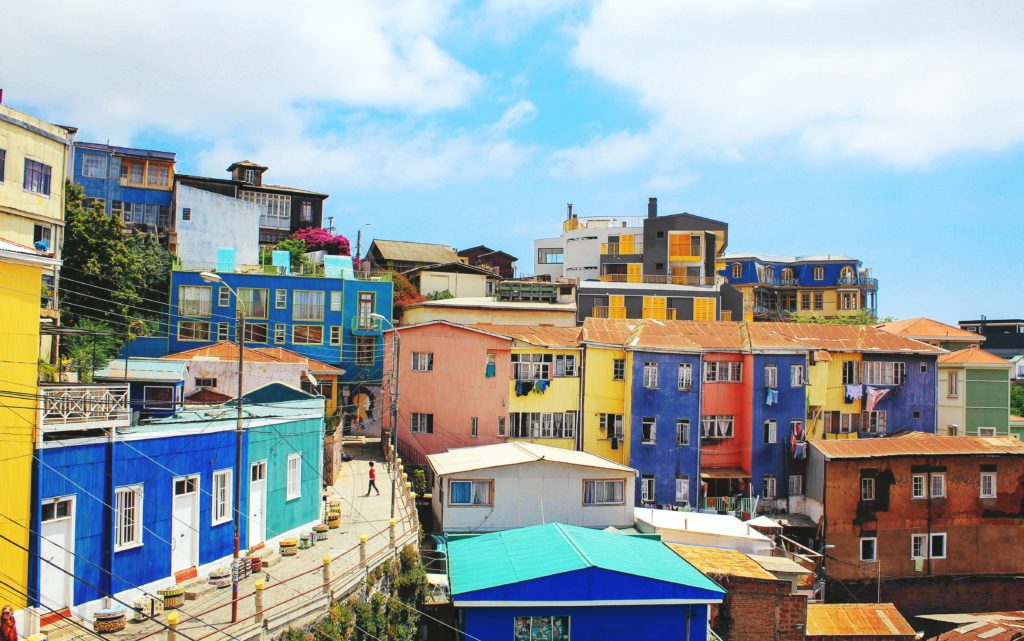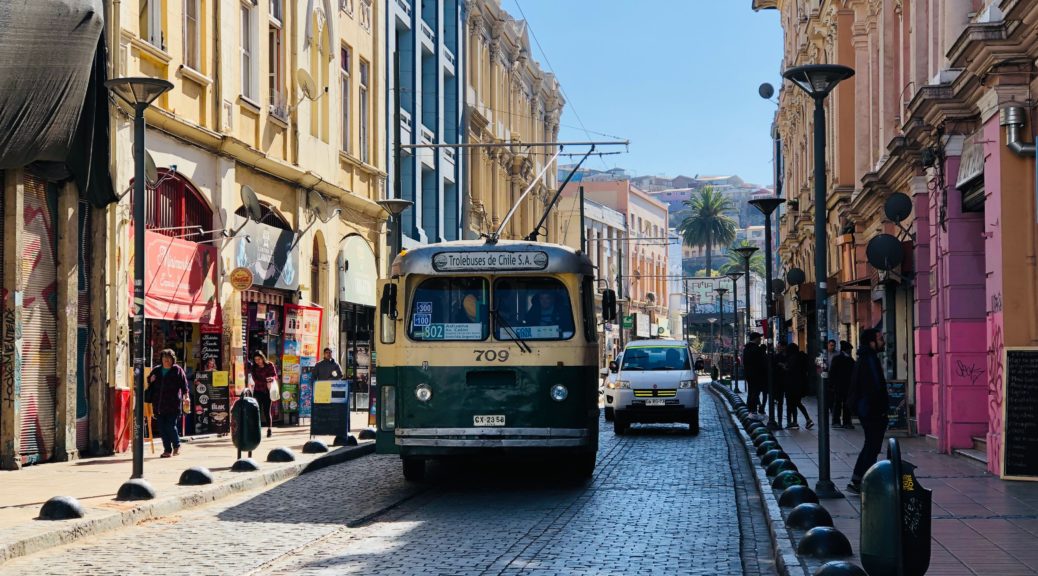By Jamie Schlegel
Edited by Natalie Grace Sipula
[3.5 minute read]
The coastline of Chile is composed of many turns and rocky edges. My fellow travelers and I kept ourselves entertained watching them as our van turned those corners for several hours on the drive from Santiago to Valparaiso. Gradually, the tell-tale signs of a city began to make themselves apparent: less ocean and more buildings. Finally, the van came to a stop. As we unpacked our bags and headed into the hostel, we already felt the chilly weather of the southern hemisphere.

The place we were going to stay at turned out to be on the top floor of the building. Fairly early in the morning, we were woken up by the sunlight streaming in through the skylights. As we crawled sheepishly out of bed, the realization that we were in a new city truly woke us up. After a quick breakfast of bread, cheese, and jam, we rushed out into the winter air. The neighborhoods in Valparaiso are called Cerros, and our Cerro was one of the most colorful places I had ever seen. The streets were made of cobblestone and were reminiscent of Europe. The buildings were lined with small shops, each one different from the last. The apartments that sprawled above them were colored in magnificent yellows, pinks and blues.
The buildings of Valparaiso were beautiful, but I would say the most magnificent sight in the city was the murals. Every inch of the city, from the steps to the lampposts to the 50-foot-long walls, were covered with art more amazing than those found in any museum I had ever visited. There were renditions of Van Gogh’s Starry Night with 20-foot sunflowers, a powerful indigenous woman, and many more that I couldn’t even begin to understand. The city encouraged art, and the people there seemed to look at life differently because of that.


